Ice Floes: Day 6
We woke up this morning in the far north and are spending the day moving through the sea ice that exists near the North Pole. We reach the most northern point of our journey at 80 degrees 27.5 minutes North where the sun arcs around the sky but doesn’t come even near the horizon. A Ponant excursion later in the season might make it even further toward the magnetic pole as the summer warmth continues to melt the ice, a phenomena that is increasing exponentially due to climate change and specifically related to the warming gulf current coming up the western shores of Svalbard from the U.S.
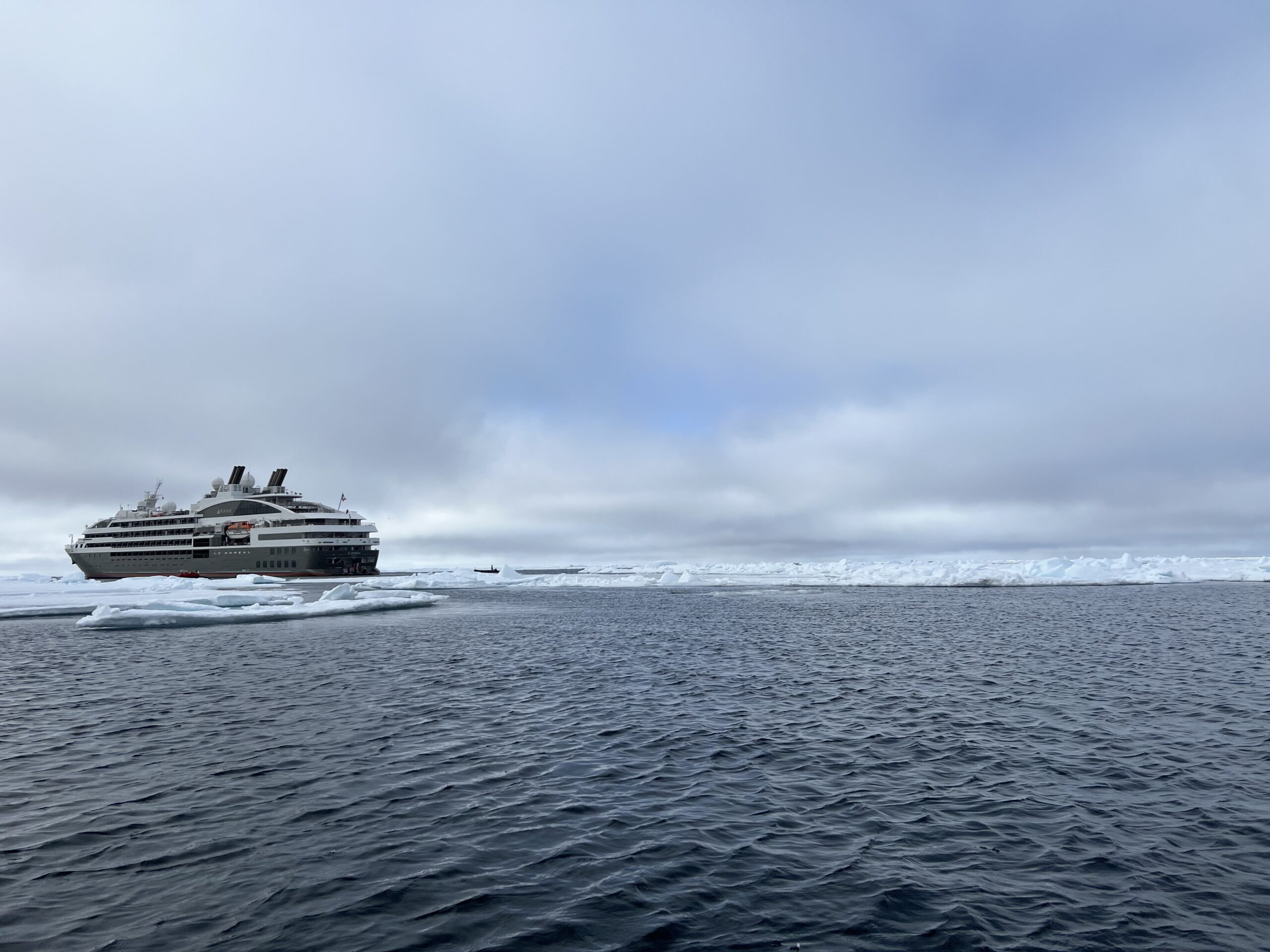
The free time this morning was spent on excellent lectures, one on the history of Svalbard and one on Polar Bears. Spitzberg, which is the largest island that is part of the Svalbard archipelago, was the heart of various European settlements in the 1700’s melting down blubber for oil. The result was the hunting of wildlife near to extinction to provide food for the workers, a lesson learned by the local marine and land animals so that they remain very wary, rationally so, of humankind.
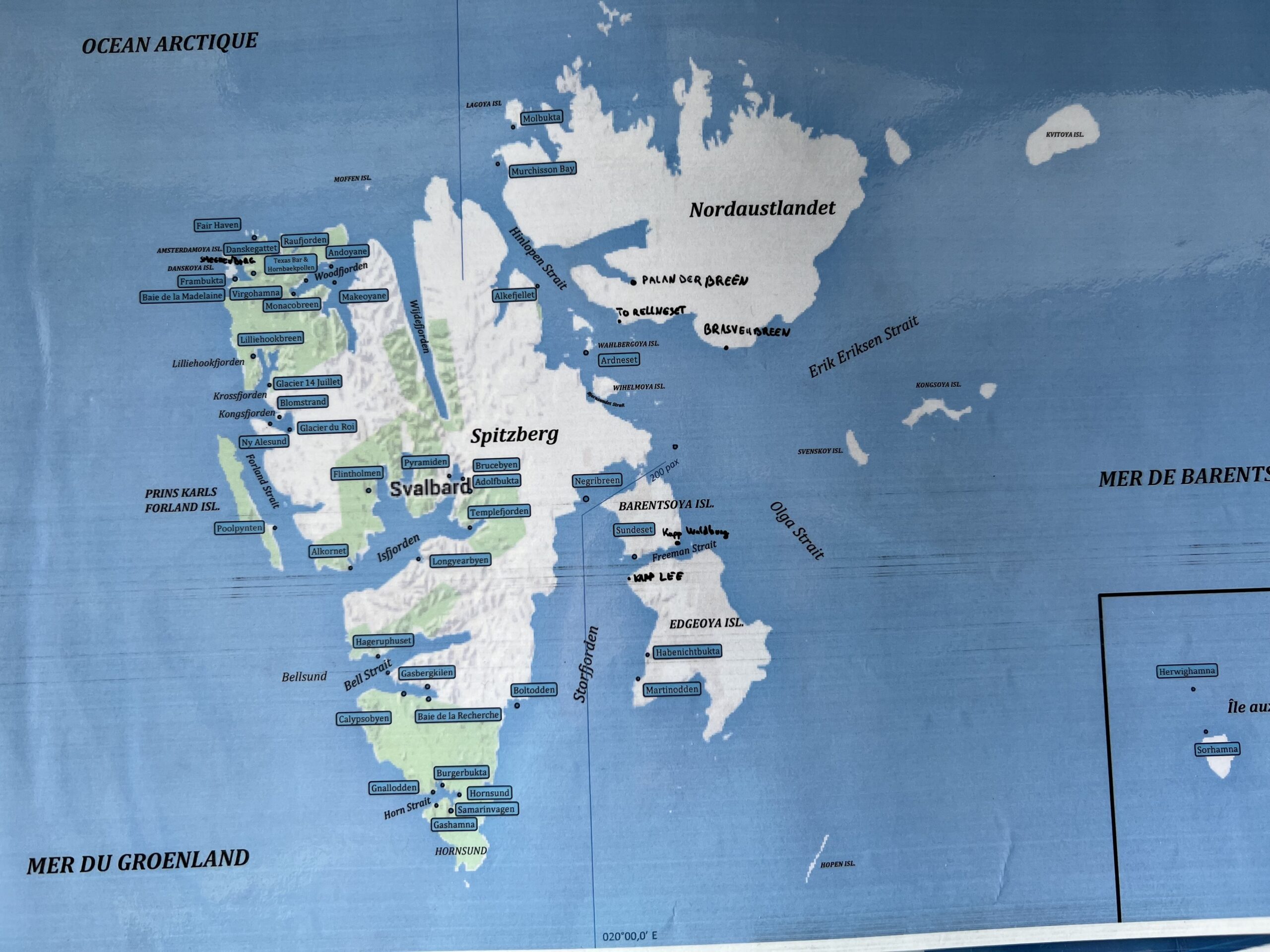
Our excursion today was on Zodiacs through the ice floes that cover the North Pole, with the scenery a flat undulating landscape of pieces of ice, about 3-8” thick, enough for a polar bear to walk on but no place for human footsteps. Our experts talked about the difference between glacial ice (creating icebergs) and sea ice which spreads across areas of the water and on which can be found seals, walruses and birds.
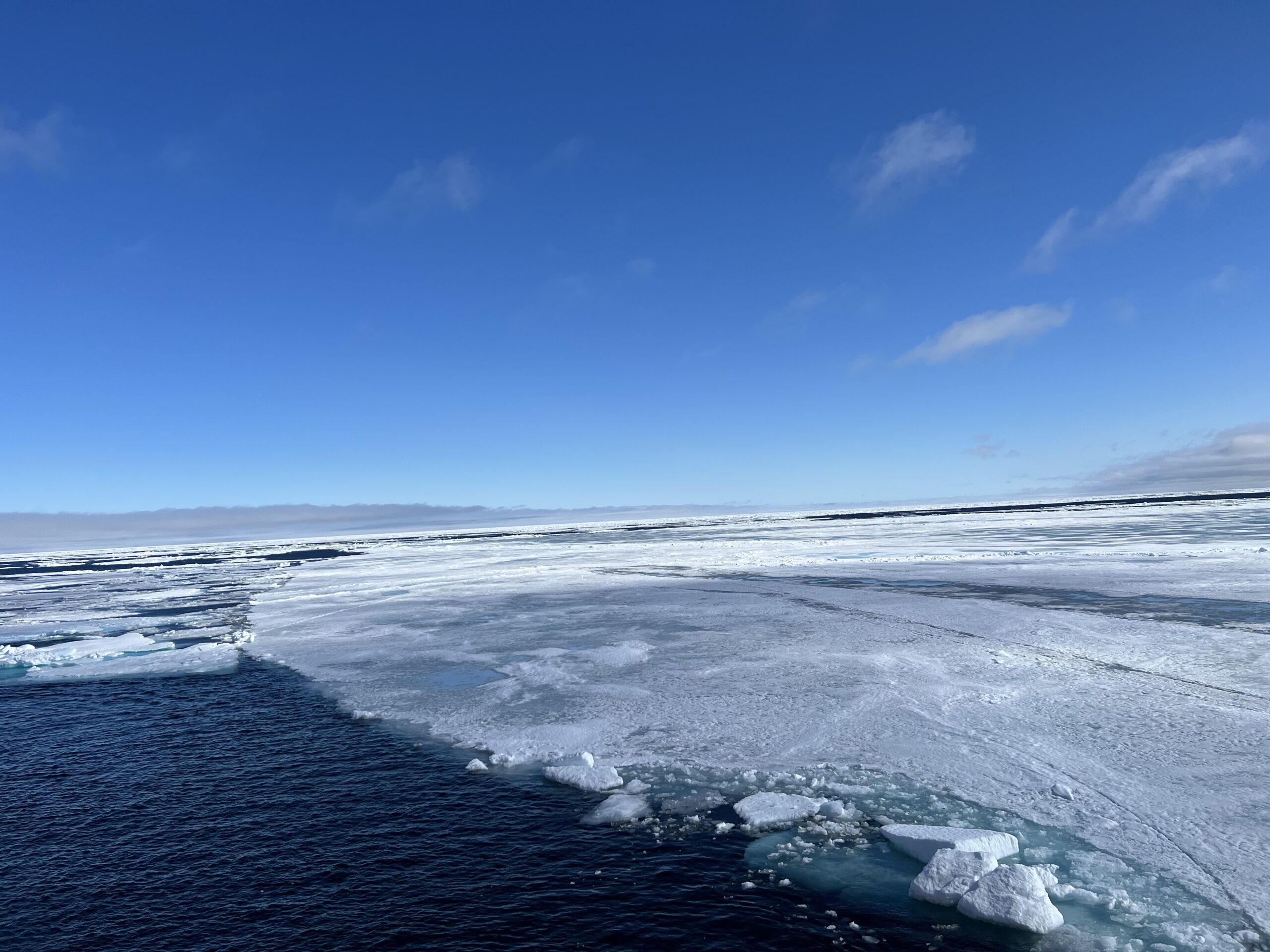
Three more delicious meals today, including a caviar and blini tasting in the late afternoon after we peeled off our many layers of clothes when back on board. And in the evening a Tiki Pool Party with our Adventure Guides diving into the theoretically warm pool and tropical drinks all around. But we, and many others, go to bed early.

Old Whaling Towns: Day 7
I wake exhausted after a poor night of sleep, with, once again, the daylight streaming in under the blackout curtains. No nightlight is needed in our stateroom as there is more than enough light peeking around the bottom of the curtains to allow visibility within. Although we have not sat outside on our balcony, we can easily see the land formations from our beds or from the table and chair by the window.
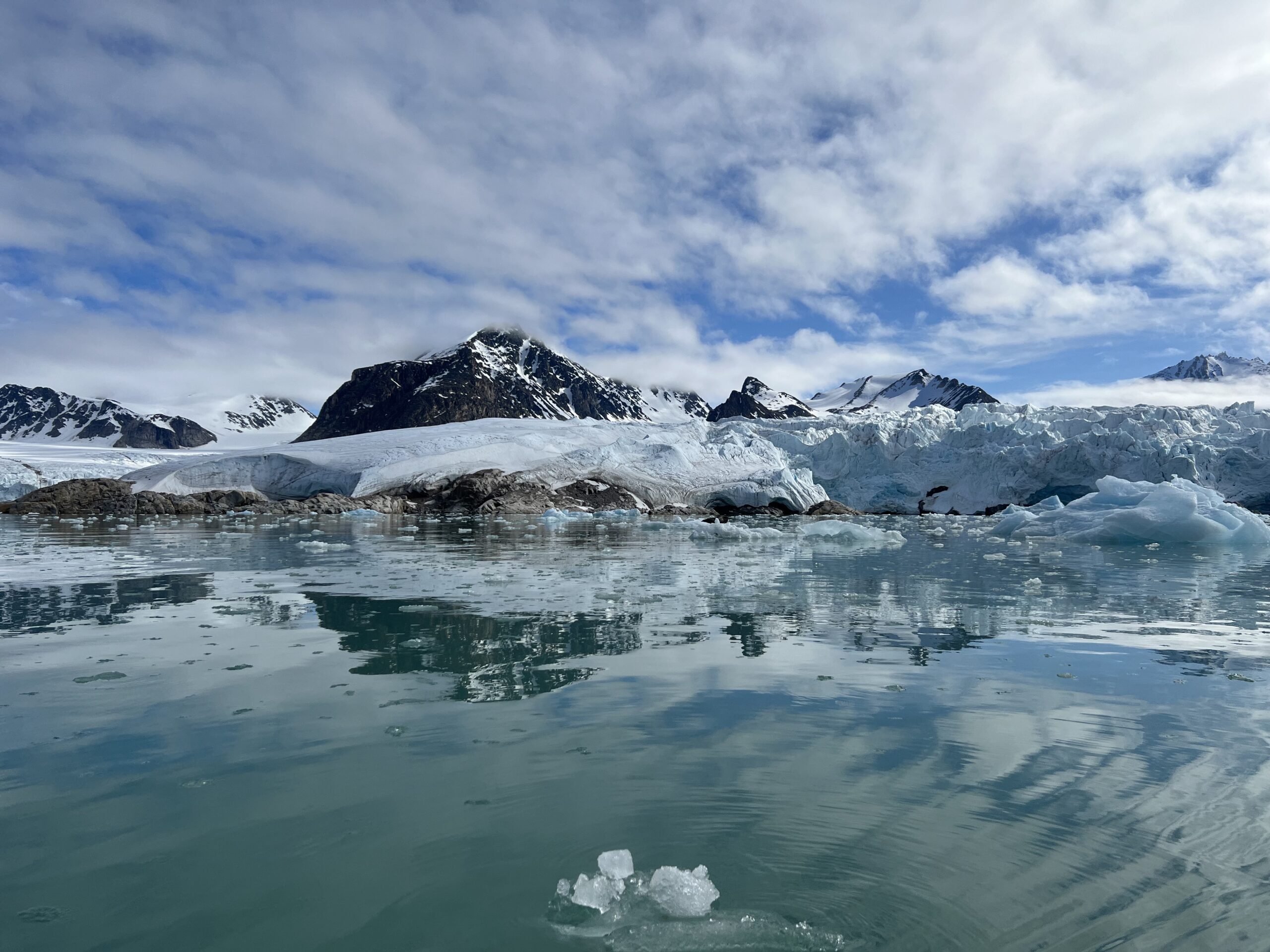
Smeerenburgbreen, a former whaling town, was grey and forbidding but beautiful in its austerity. It is difficult to believe many men lived out here centuries ago, hunting whales and living off the land — with many of them dying of scurvy from lack of Vitamin C.
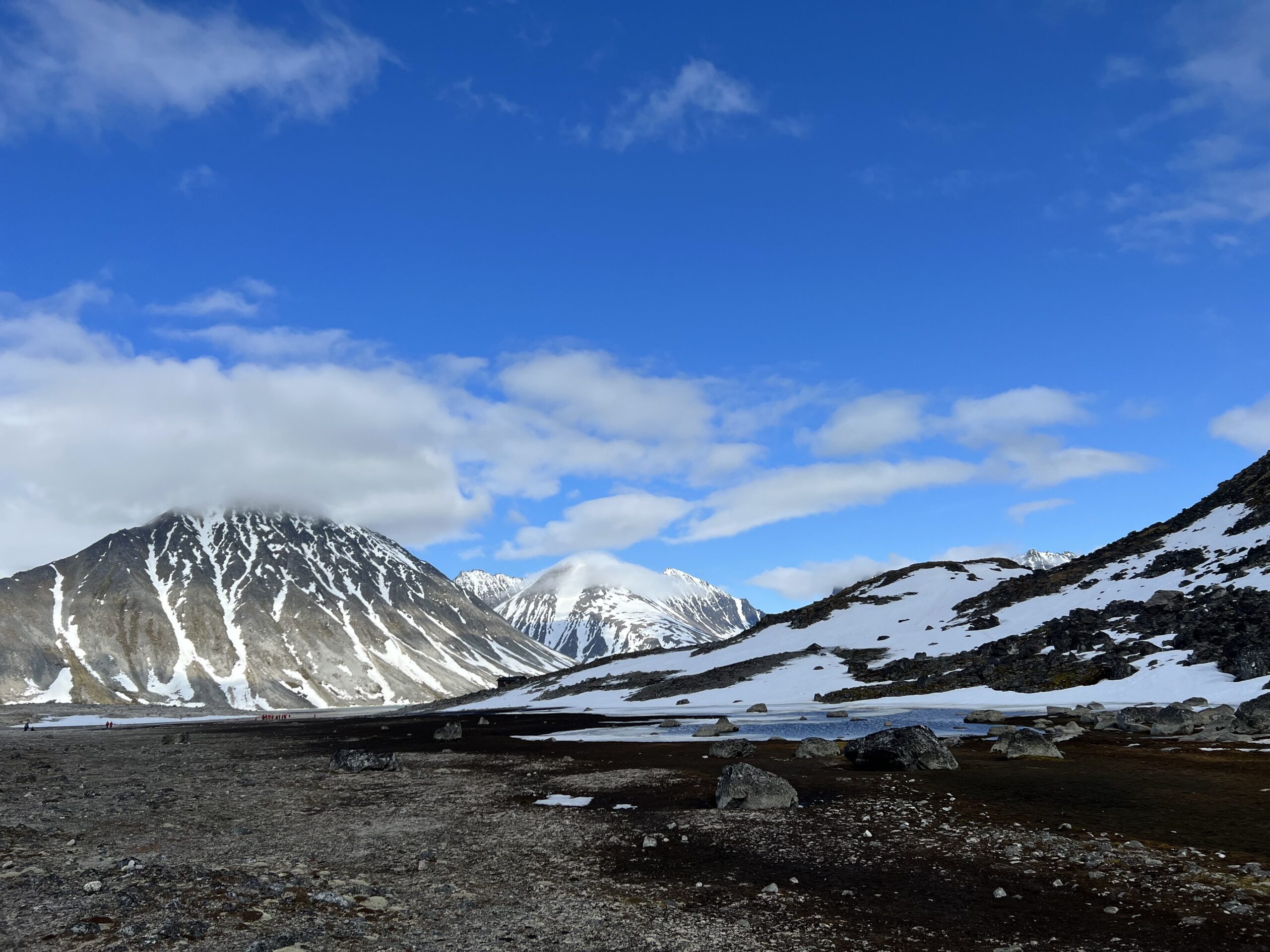
Magdalena Bay was also once a whaling station in the 17th century but now there are only a few remains, including a cemetery, of the Dutch companies that were actively exporting oil from blubber. We have a wet landing on the shore, jumping out with our waterproof boots into shallow water, and we walk over very large uneven round stones until we cross to the softer ground and then cliffs where small auk birds are nesting.
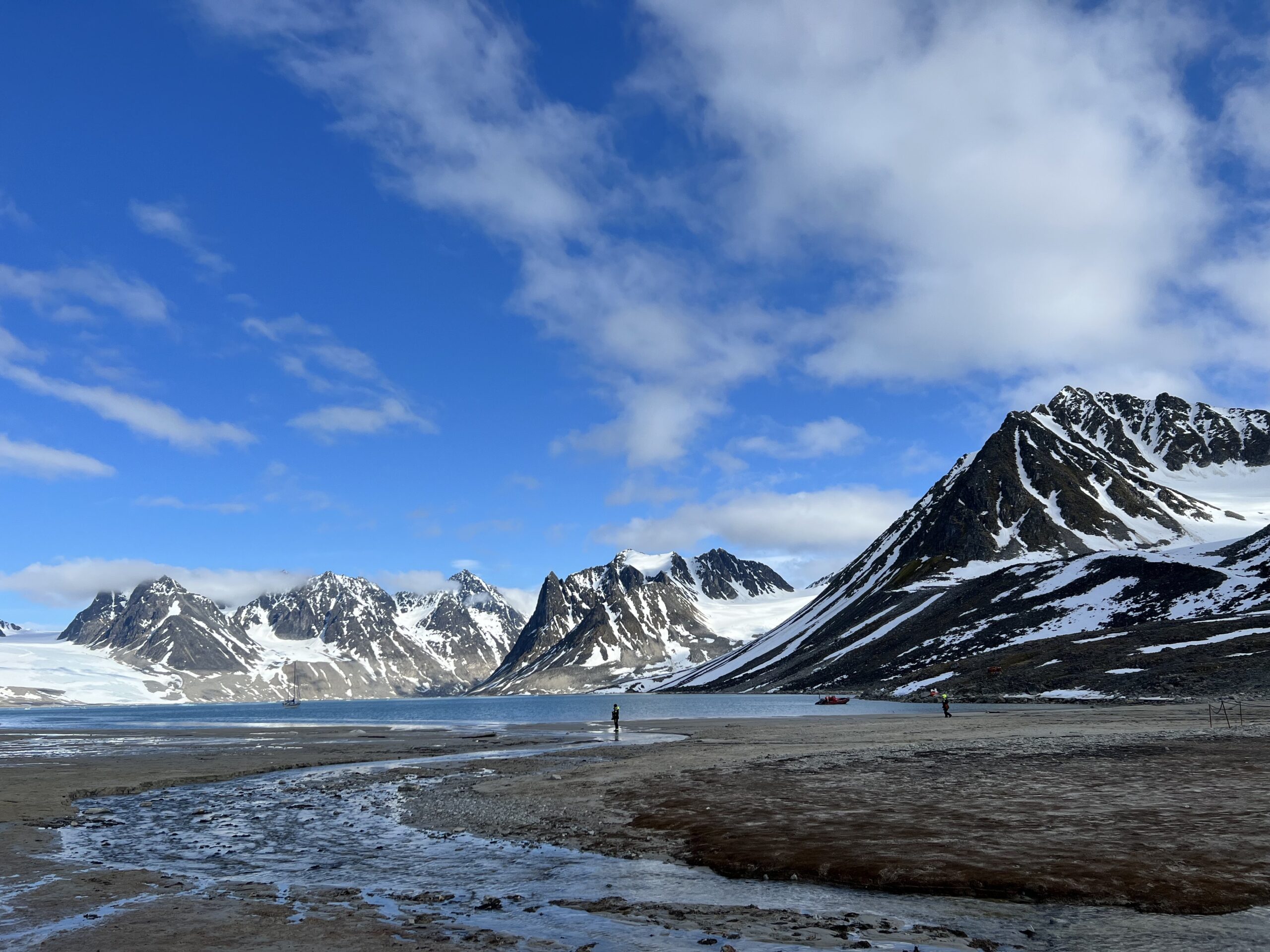
But the big event of the afternoon was a further Zodiac trip to a huddle of large walruses on a comfy strip of sand. They entertained us by occasionally slipping out of their herd and diving into the water, huffing at each other and play fighting.
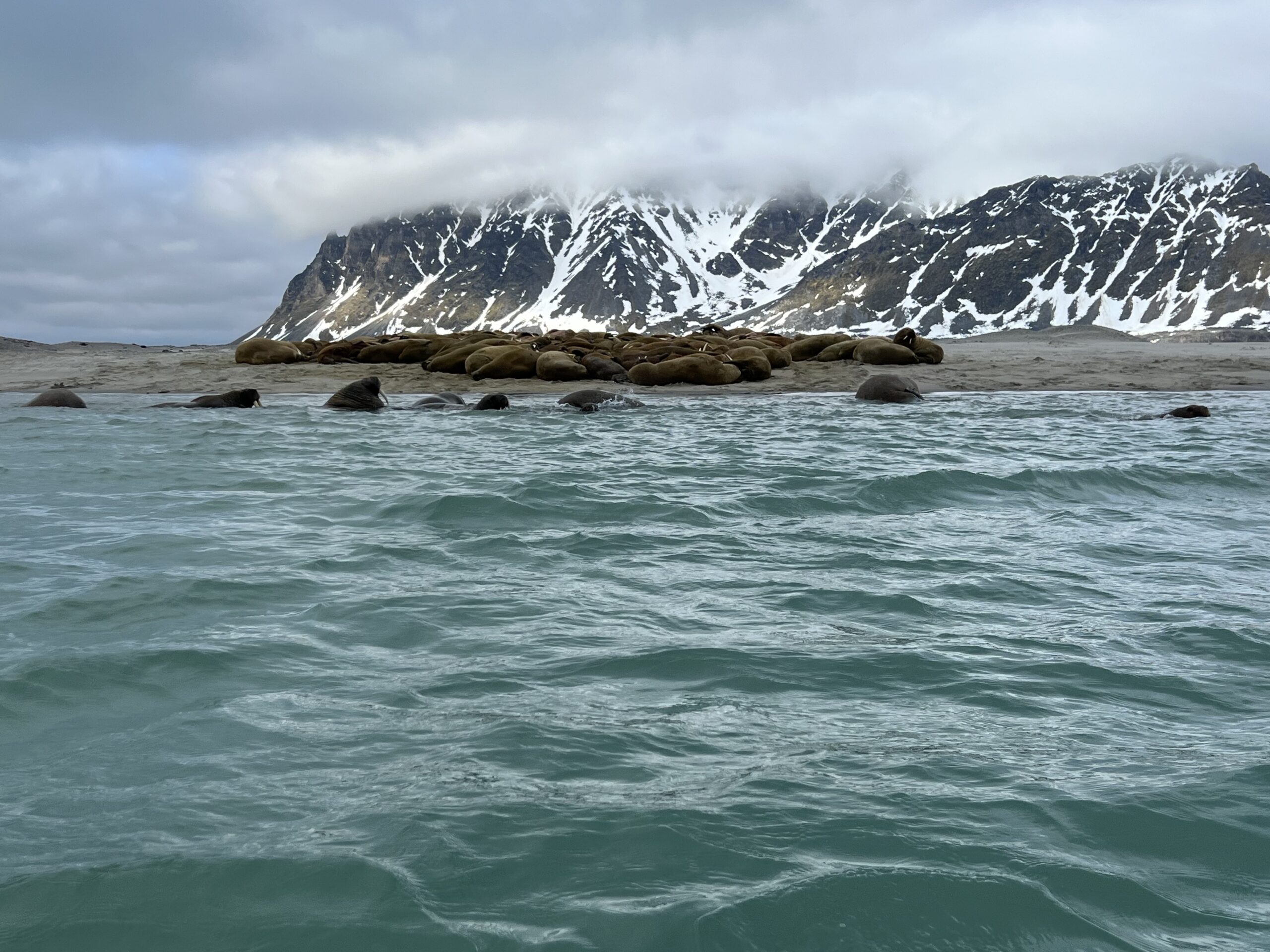
There were probably about 35 or more of these immense animals, with large tusks, near us. We all quietly sat in our rafts and watched them enjoying themselves in an inhospitable environment for anyone except the arctic creatures.
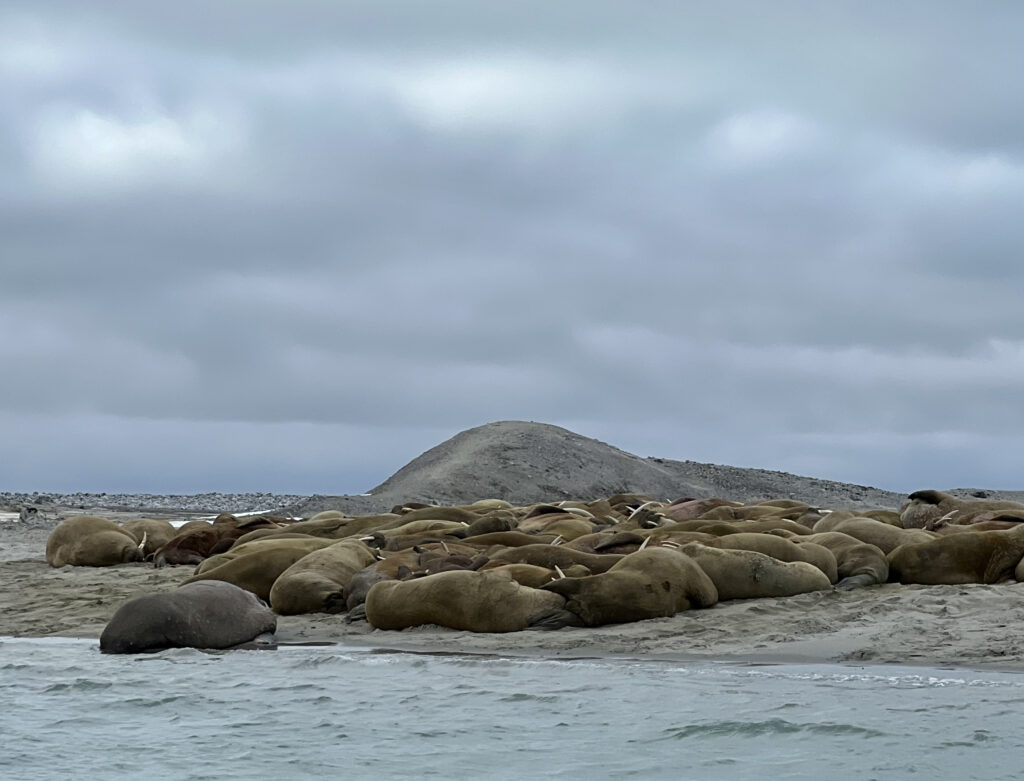
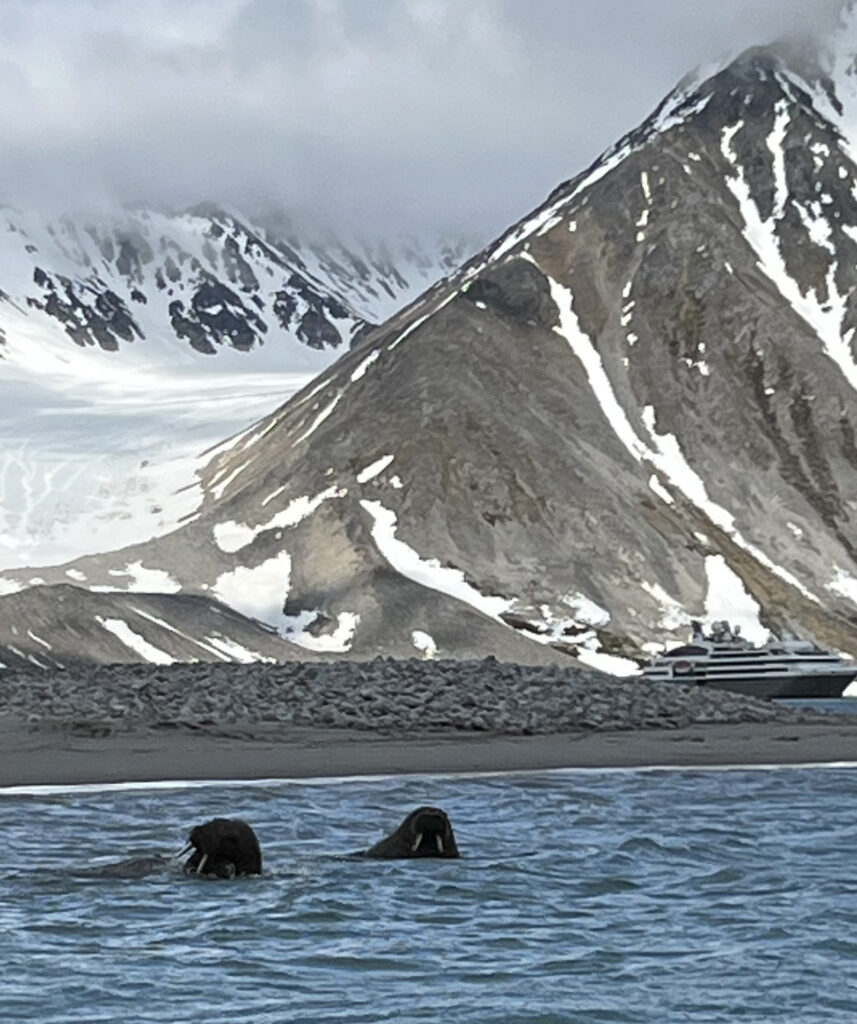
Tomorrow is our last full day on board and we look forward to more nordic experiences.
